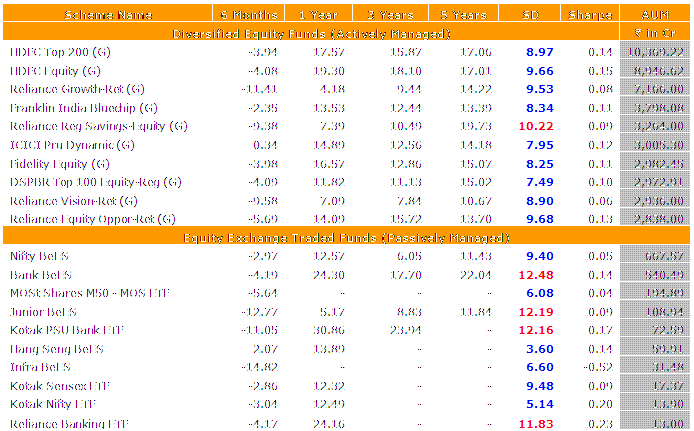Portfolio churning good or bad for your mutual fund
Post on: 9 Июнь, 2015 No Comment

Impact
With markets hitting new highs frequently, valuations are getting stretched. Yes, midcaps are still cheaper than largecaps but many of them have already rallied extensively over last few months. About 150 stocks listed on Bombay Stock Exchange (BSE) have hit 52-week high lately. Investors are awaiting election outcome. It’s a testing time for investors.
Many of you who invest in stocks might be thinking about exiting now to realise profits and hoping that you will get buying opportunities post-election. There are some investors who believe only in short term trading. They enter or exit stocks quickly. They will exit as soon as they feel they have made enough of profit in a stock or they find more rewarding opportunities. Such investors might be investing in companies, which in their opinion, would benefit if election outcome turns out to be in accordance to their expectation. However, there are a number of disciplined investors who buy stocks and hold them for long term. They are unmoved even when a number of stocks from their portfolio generate huge returns over a very short period of time. Like that for you, it’s a tricky time even for fund managers managing mutual funds.
Churning activity of mutual funds.
There is a statistical ratio called portfolio turnover ratio which helps you understand how frequently your fund manager enters and exits stocks. The ratio is calculated by taking lower of total sales or purchase transactions performed by a fund over one year and dividing it by average net assets. For example, a fund having Rs 600 crore under its management performed 200 crore worth purchase transactions (assuming purchases are lower than sales) would have a portfolio turnover ratio of 33. A portfolio turnover ratio of 100 indicates that the entire portfolio of the fund is restructured over a period of one year. Churning activity of a fund depends on a number of factors such as:
Objective of the fund: If a fund endeavours to focus on opportunities present across sectors and benefit from company specific opportunities, it may indulge in excessive churning. Growth oriented funds and opportunities funds may have higher portfolio churning than rest of equity diversified funds. On the other hand, value oriented funds would have lower portfolio churning.
Philosophy of the fund house: Some fund houses do not mind churning portfolio aggressively if there is an opportunity to generate superior returns. Fund houses such as Edelweiss Mutual Fund, Sahara Mutual Fund, Kotak Mutual Fund, Deutsche Mutual Fund along with BNP Paribas Mutual Fund and DSP BlackRock Mutual Fund have a tendency to churn portfolios aggressively. On the other hand, Franklin Templeton Mutual Fund, HDFC Mutual Fund and Quantum Mutual fund have a relatively lower portfolio turnover ratio at the fund house level. It is noteworthy that a few fund houses such as Escorts Mutual Fund and JM Mutual Fund which happened to churn aggressively have lowered the portfolio churning during past 3 years, suggested by lower portfolio turnover ratio.
Market conditions: It is observed that, usually under flat market conditions, portfolio turnover of mutual funds is lower. However, volatile markets throw up good buying and selling opportunities. Therefore, portfolio churning tends to be higher when markets are volatile.
Macroeconomic outlook: When the macroeconomic outlook is expected to turn negative from positive or vice-versa, mutual funds tend to restructure their portfolios thereby giving rise to overall churning activity. For example, in today’s context as the new government is expected to give a big push to manufacturing and infrastructure; mutual funds are taking fresh positions in stocks belonging to these sectors. At the same time, companies belonging to consumer non-durable segment are falling out of favour with mutual funds on valuation concerns.

Does churning affect returns?
Yes. More churning means more expenses that eat into returns generated by the fund. Apart from this churning may generate poor returns if a mutual fund ends up exiting good stocks too early without utilising investment opportunities to the fullest. However, it doesn’t mean fund houses which do not churn would surely generate good returns. Having said this, it is observed that funds which have generated superior returns consistently have rarely indulged in excessive churning.
What a portfolio turnover would not tell you.
Since portfolio turnover ratio is a statistical measure of churning, it wouldn’t tell you whether all stocks were sold off over last one year or only a part of a portfolio was churned several times. In practice, most of mutual funds which have a portfolio turnover ratio in excess of 100 (i.e. seemingly they restructured the entire portfolio) do not sell off all their holdings within a year. More often, they keep their core holdings stable and only a part of portfolio is churned over and over again.
PersonalFN is of the view that, it is important to consider the portfolio turnover ratio of a fund before you invest in it. However, portfolio turnover ratio, when considered in isolation, doesn’t tell you anything about the performance of the fund. Therefore, PersonalFN believes, in addition to portfolio turnover ratio, you have to consider a whole host of factors that will help you identify a winning mutual fund.














